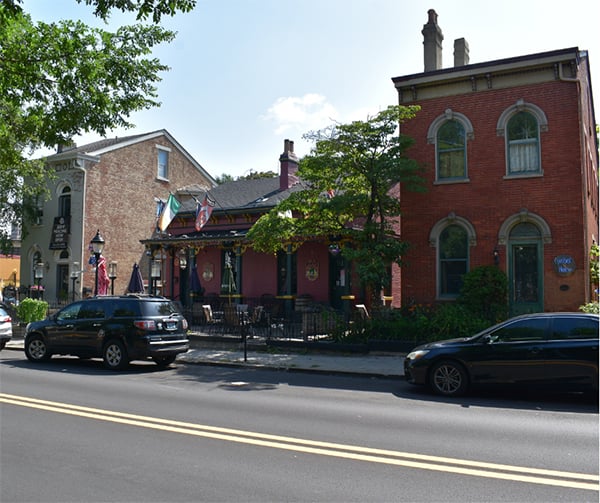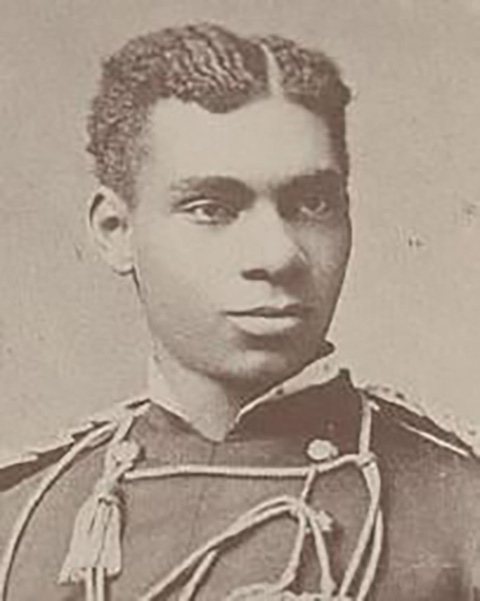By Steve Flairty
Kentucky by Heart
Kentucky has a literary landscape heritage proudly holding its own among all the states. From John Fox, Jr., Elizabeth Madox Roberts, and James Lane Allen to the contemporary writing genius of Wendell Berry, we can make our case as a “statehood of letters.”
We can even look back with keen interest on our own version of Missouri-raised Mark Twain, he of stories told about river life. Kentucky’s special author of the Twain kind was born and raised in Covington, and he never forgot the ambiance of the location.

Ben Lucien Burman was born in 1895 to Jewish immigrants. From his Covington vantage point, according to William Ward in his book, A Literary History of Kentucky, he “became fascinated by the river boats he saw on the waterfront and on the streets.” At the age of seven, he started writing on a toy typewriter.
Attending college at Miami (Oh) from 1913 to 1915, his academic training was interrupted by World War I, where he served in France. He was wounded in 1918 at Soissons. After the war, he graduated from Harvard in 1920 and taught at Covington’s Holmes High School during the 1920-21 school year. He gravitated towards writing, however, and in the 1920s, worked for the Cincinnati Times-Star and national periodicals such as Reader’s Digest, Saturday Review, and Nation.
At 34, he spent time in Lookout Heights, outside Covington, musing about what he wanted to do with the rest of his life. A few years before, in 1927, he had married Alice Caddy, who would support him greatly while illustrating the many books he would later publish. He first wrote short stories and detective fiction, along with Kentucky mountain ballads. In the Nation, he wrote an article on Kentucky.
Already quite successful and still intrigued by river life, Burman and his wife signed on with the Tennessee Belle steamboat, he as a cub pilot. That was all the inspiration he needed, as he spent much of the rest of his life writing about the river and its people. Included was his first book, Mississippi, a story about a feud between a steamboat owner and shantyboat people where the steamboat operates.
Burman’s most famous book, Steamboat Round the Bend, published in 1933, tells of the relationship of a couple, Miss Robbie and Doctor Jim. They are a somewhat odd couple, as she paints chinaware and is known for her love of fashion. He lives on a shantyboat and sells herb remedies, hoping to make enough money to buy a steamboat.
He stated that the “theme of every book I have written is the child-likeness of all humanity. We are all children, groping our way through, we know not how, seeking the Holy Grail.”
Ironically, despite being seriously hurt serving in WW I, Burman was also involved in World War II as a war correspondent in Africa. He was attached to the French and the British Eighth Army and received recognition, the French Legion of Honor for his reporting. Those experiences inspired three novels: Miracle on the Congo (1942), The Rooster Crows for Day (1945), and The Street of the Laughing Camel (1959).

Burman’s body of work saw lots of recognition, including these examples:
• Steamboat Around the Bend was made into a movie starring noted humorist Will Rogers.
• The Rooster Crows for Day won the Thomas Jefferson Memorial Award.
• The Street of the Laughing Camel was produced by the Theatre Guild.
• It’s a Big Continent was a book club selection.
The 1950s saw Burman write children’s books revolving around “Catfish Bend,” a mythical, swampy, bend on the Mississippi River near Baton Rouge. William Ward described them as stories that “blend an interest in rivers that traces back to his birthplace in Covington and a tradition of animal stories and beast epics.”
Seven volumes were written, with High Water at Catfish Bend, Seven Stars for Catfish Bend, and The Owl Hoots Twice at Catfish Bend being the first three. Local officials at Baton Rouge recognized Burman’s work with a marker at the river site, as well as naming a river light near the town in his honor. It’s estimated that at least sixteen million copies of books in this series, written in English and ten other languages, have been sold. Burman’s wife and illustrator, Caddy, certainly deserves much of the credit, too.
Due to its popularity, the makers of the game “Scrabble” produced another game about the Catfish series called “Catfish Bend Storybook Game,” and The Owl Hoots Twice at Catfish Bend was made into a movie by puppeteer Luo Bunin.
And to think, the productive — credited with 23 books — and well-heralded life of Ben Lucien Burman was inspired by his native Northern Kentucky surroundings.
Who will be next?


















